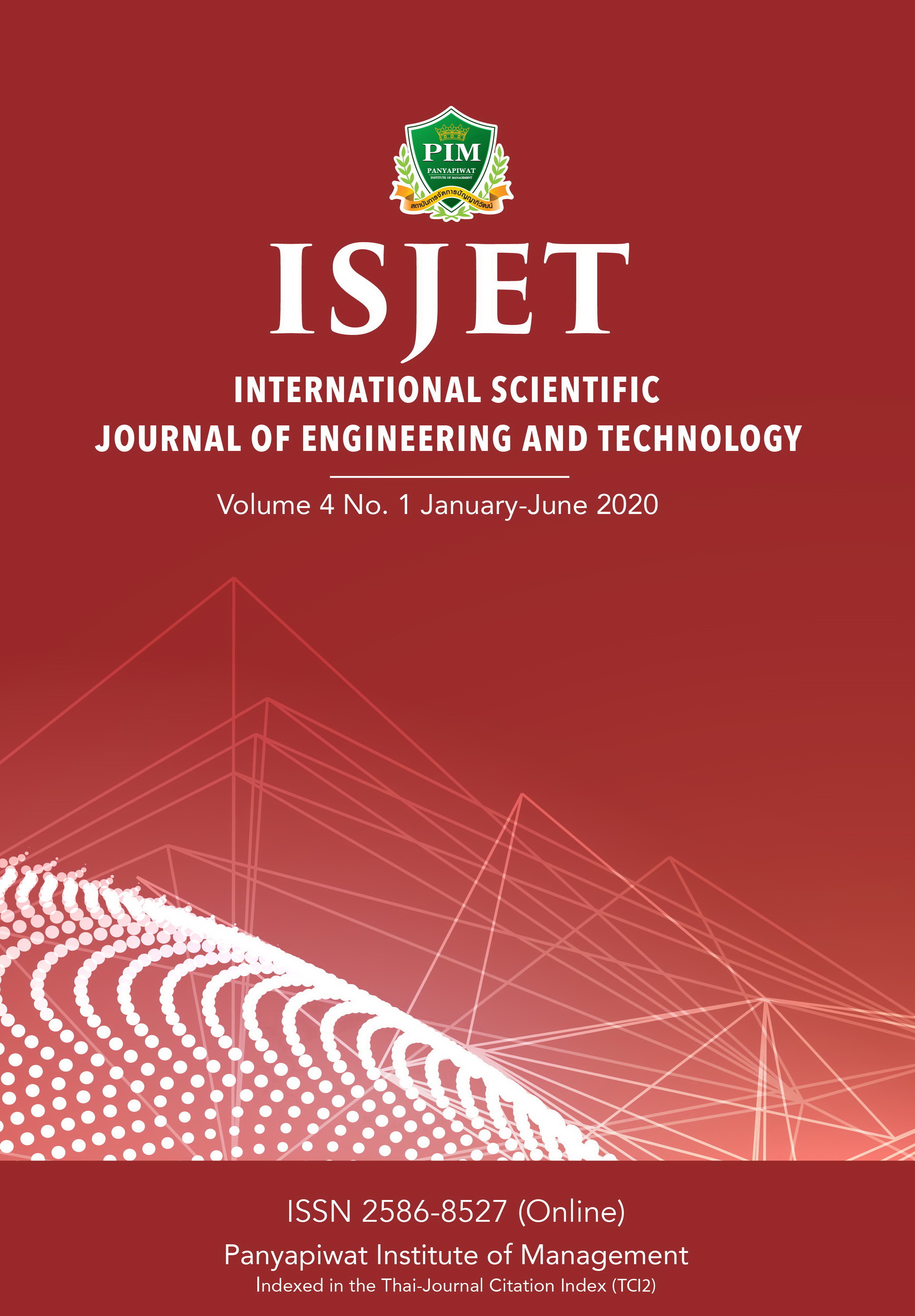Resilient Supplier Selection under Uncertainty Using the Extended TOPSIS Method: The Case of Electronic Components Procurement
Main Article Content
Abstract
Abstract—Due to globalization, supply chains are interrupted by unpredictable natural or man-made disasters, as well as other kinds of disruptive events. The selection of suppliers based on resilience strategies, therefore, has been considered a necessary factor for mitigating such uncertainties. However, the studies that provide practical methods using the Technique for Order Preference by Similarity to Ideal Solution (TOPSIS) to support resilient supplier selection in the electronic industry is still limited. Most of electronic products are made up of a variety of components. Logical supplier selection process is therefore necessary in this industry. This study aims to identify critical criteria for the resilient supplier selection that is applicable to electronic manufacturers. The extended TOPSIS method is then adopted to facilitate the selection process. Uncertain and unavailable data, which tends to exist in actual resilient supplier selection problems, can be managed logically. The effective use of the supplier resilience strategies helps electronic firms be prepared for unpredictable disasters. The proposed method can be applied not only for resilient supplier selection but also any cases of multi-criteria decision making.
Article Details
เนื้อหาข้อมูล
References
A. K. Sahu, S. Datta, and S. S. Mahapatra, “Evaluation and selection of resilient suppliers in fuzzy environment: Exploration of fuzzy-VIKOR,” Benchmarking, vol. 23, no. 3, pp. 651–673, 2016.
B. Chang, C. W. Chang, and C. H. Wu, “Fuzzy DEMATEL method for developing supplier selection criteria,” Expert Syst. Appl., vol. 38, no. 3, pp. 1850–1858, 2011.
P. Sureeyatanapas, K. Sriwattananusart, T. Niyamosoth, W. Sessomboon, and S. Arunyanart, “Supplier selection towards uncertain and unavailable information: An extension of TOPSIS method,” Oper. Res. Perspect., vol. 5, pp. 69–79, Jan. 2018.
A. Chen, C. Y. Hsieh, and H. M. Wee, “A resilient global supplier selection strategy—a case study of an automotive company,” Int. J. Adv. Manuf. Technol., vol. 87, no. 5–8, pp. 1475–1490, 2016.
A. Haldar, A. Ray, D. Banerjee, and S. Ghosh, “Resilient supplier selection under a fuzzy environment,” International Journal of Management Science and Engineering Management, vol. 9, no. 2. Taylor & Francis, pp. 147–156, 2014.
R. Davoudabadi, S. M. Mousavi, V. Mohagheghi, and B. Vahdani, “Resilient Supplier Selection Through Introducing a New Interval-Valued Intuitionistic Fuzzy Evaluation and Decision-Making Framework,” Arab. J. Sci. Eng., vol. 44, no. 8, pp. 7351–7360, 2019.
S. Hosseini and A. Al Khaled, “A hybrid ensemble and AHP approach for resilient supplier selection,” J. Intell. Manuf., vol. 30, no. 1, pp. 207–228, 2019.
M. M. Hasan, D. Jiang, A. M. M. S. Ullah, and M. Noor-E-Alam, “Resilient supplier selection in logistics 4.0 with heterogeneous information,” Expert Syst. Appl., vol. 139, pp. 112799, 2020.
T. K. Wang, Q. Zhang, H. Y. Chong, and X. Wang, “Integrated supplier selection framework in a resilient construction supply chain: An approach via analytic hierarchy process (AHP) and grey relational analysis (GRA),” Sustain., vol. 9, no. 2, 2017.
V. Nourbakhsh, A. Ahmadi, and M. Mahootchi, “Considering supply risk for supplier selection using an integrated framework of data envelopment analysis and neural networks,” Int. J. Ind. Eng. Comput., vol. 4, no. 2, pp. 273–284, 2013.
D. Pramanik, A. Haldar, S. C. Mondal, S. K. Naskar, and A. Ray, “Resilient supplier selection using AHP-TOPSIS-QFD under a fuzzy environment,” Int. J. Manag. Sci. Eng. Manag., vol. 12, no. 1, pp. 45–54, 2017.
A. Mohammed, I. Harris, A. Soroka, N. Mohamed, and T. Ramjaun, “Evaluating Green and Resilient Supplier Performance: AHP-Fuzzy Topsis Decision-Making Approach,” no. Icores, pp. 209–216, 2018.
S. A. Torabi, M. Baghersad, and S. A. Mansouri, “Resilient supplier selection and order allocation under operational and disruption risks,” Transp. Res. Part E Logist. Transp. Rev., vol. 79, pp. 22–48, 2015.
C. Gencer and D. Gürpinar, “Analytic network process in supplier selection: A case study in an electronic firm,” Appl. Math. Model., vol. 31, no. 11, pp. 2475–2486, 2007.
N. Bharadwaj, “Investigating the decision criteria used in electronic components procurement,” Ind. Mark. Manag., vol. 33, no. 4, pp. 317–323, 2004.
H. Fazlollahtabar, I. Mahdavi, M. T. Ashoori, S. Kaviani, and N. Mahdavi-Amiri, “A multi-objective decision-making process of supplier selection and order allocation for multi-period scheduling in an electronic market,” Int. J. Adv. Manuf. Technol., vol. 52, no. 9–12, pp. 1039–1052, 2011.
A. H. I. Lee, H. J. Chang, and C. Y. Lin, “An evaluation model of buyer-supplier relationships in high-tech industry - The case of an electronic components manufacturer in Taiwan,” Comput. Ind. Eng., vol. 57, no. 4, pp. 1417–1430, 2009.
C. Y. Chiou, C. W. Hsu, and W. Y. Hwang, “Comparative investigation on green supplier selection of the American, Japanese and Taiwanese Electronics Industry in China,” 2008 IEEE Int. Conf. Ind. Eng. Eng. Manag. IEEM 2008, pp. 1909–1914, 2008.

